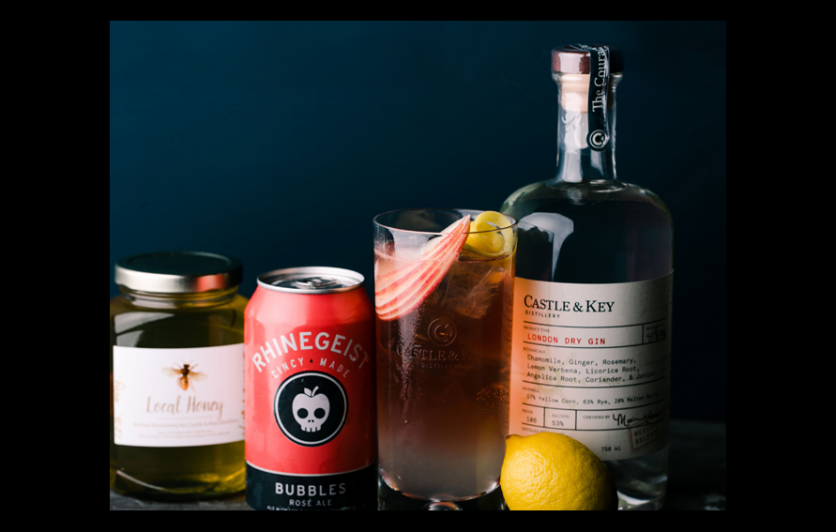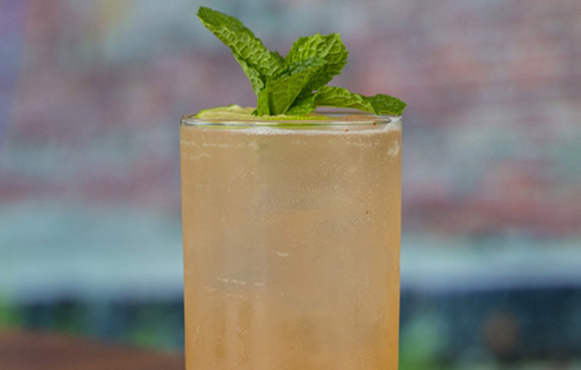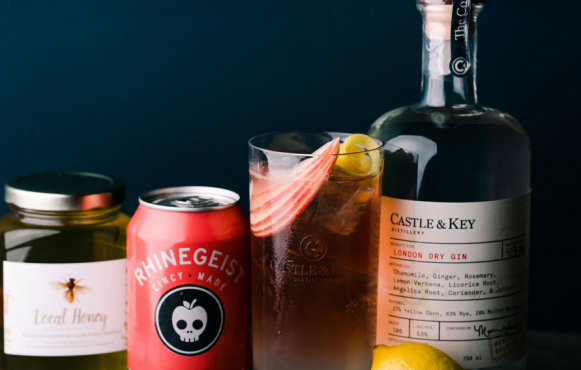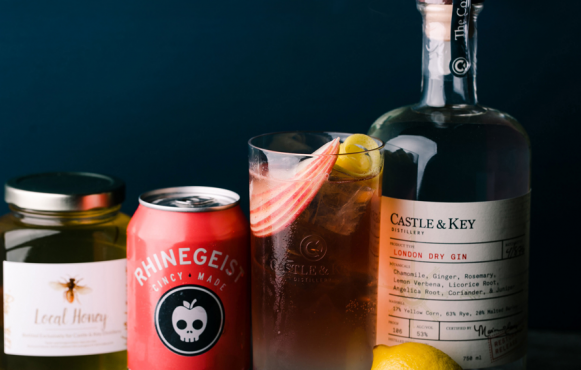Kentucky (Craft) Gin is ‘In’

“Gin is a spirit that’s fun to be creative with as a distiller … and as a mixologist. It brings so much to the table.”
I’m a gin fan. Yep, I proudly admit it, though saying it in Kentucky is nearly on par with a confession of sin. I don’t care. I’ll say it among the legions of bourbon fans — to which I belong — even while sipping whiskey.
I’m not alone, either, and the evidence is clear: liquor store shelves sagging under the weight of so many gin options, and cocktail menus practically blooming with its botanical presence. Gin is in, folks, so go get you some. It’s a terrific cure for what I call “brown syndrome,” that unnecessary solitary devotion to whiskey only.
Gin, a 400-year-old spirit, is beloved globally for its versatility. In the hands of a skilled mixologist, any gin cocktail is refreshing, bracing, balanced between bitter and sweet, and nearly always lightly textured.
“Gin plays well with everything,” says Mattias Horseman, central U.S. brand ambassador for Hendrick’s Gin, who was in Louisville recently for a Breeder’s Cup gig. English by birth, Horseman grew up revering gin in a nation that embraced it to the point of near self-ruin in the 1600s. (Read up on “the Gin Craze” sometime when you think drinking is out of hand in 2018.) After abusing it for a solid century, the Brits got their act together and refined it to standards we know today: London Dry, Plymouth, Navy Strength and Old Tom.
Genever, the original gin created by the Dutch, also is making a comeback, while gins made in the U.S.A. are typically grouped under the vague heading of New Western Dry, meaning less juniper forward. Since that gives no indication of the incredible complexity of American gins, I suggest you go learn them by taste.
“It doesn’t surprise me at all to see great gins coming out of Kentucky,” Horseman says. “What else do you expect from a state with such incredible distilling heritage?”
As logical as that sounds, Horseman’s statement is off just a little. The only heritage distillery making gin in Kentucky is Heaven Hill, owner of the value-priced Burnett’s Gin brand. In reality, the most interesting gins of Kentucky are products of new(ish) craft distilleries like Corsair (Bowling Green), New Riff (Bellevue), Castle & Key (Millville), Rabbit Hole (Louisville) and Copper & Kings (Louisville). Taste any of their gins blind and juniper will confirm the source spirit, but the profound differences found in each finished product will put your palate on alert.
“That’s the fun part of gin,” says Joe Heron, cofounder of Copper & Kings American Brandy. “Gin is a spirit that’s fun to be creative with as a distiller … and as a mixologist. It brings so much to the table.”
Though a longtime gin fan, Heron had no intention of making it at C&K. When his creative cadre of distillers pushed him to let them do it, he relented. Seven gin releases later, he’s glad he did. Today he facetiously calls his brandy distillery “the Accidental Gin Company.”
“It’s what we’ve become sort of by happy accident,” says Heron, whose gins are made in alembic pot stills from grape distillate. “And we’re getting ready to release two more gins next year.”
Contrary to bourbon manufacturing’s narrow recipe guidelines, gin offers distillers a wider flavor range. The source liquid for most gins is 195 proof neutral grain spirits, which is redistilled in column stills alongside a blend of aromatic botanicals that lend flavor and character. Castle & Key prints its botanical lineup — chamomile, ginger, rosemary, lemon verbena, licorice root, angelica root, coriander and juniper — on the label of its Restoration Release Gin, which is no subtle invitation to sip and identify those accents.
At Rabbit Hole Distillery, tours end with a tasting of its bourbons, rye and its rye-barrel-aged gin, an element included to “throw visitors a curve,” says bar manager Brian Hesse. Not only does the straw-colored, aromatically floral pour stand out in the all-brown sipping lineup, “it opens their eyes and helps them enjoy it. That’s so cool when so many swore they’d never drink gin again because they had some bad experience with it in college.”
Like other Kentucky craft distillers, Heron is bullish on Kentucky-made gin. Well traveled, Heron has seen and sampled gin’s market penetration in foreign lands, and that popularity afar leads him to predict a gin boom here is inevitable.
“The gin wave is going to crest on American shores this coming year,” says Heron. Brandy is still the mainstay at Copper & Kings, he adds, “but what we’ve found in gin has surprised even us.”








